A Journey Along Santa Barbara’s Historic Trails
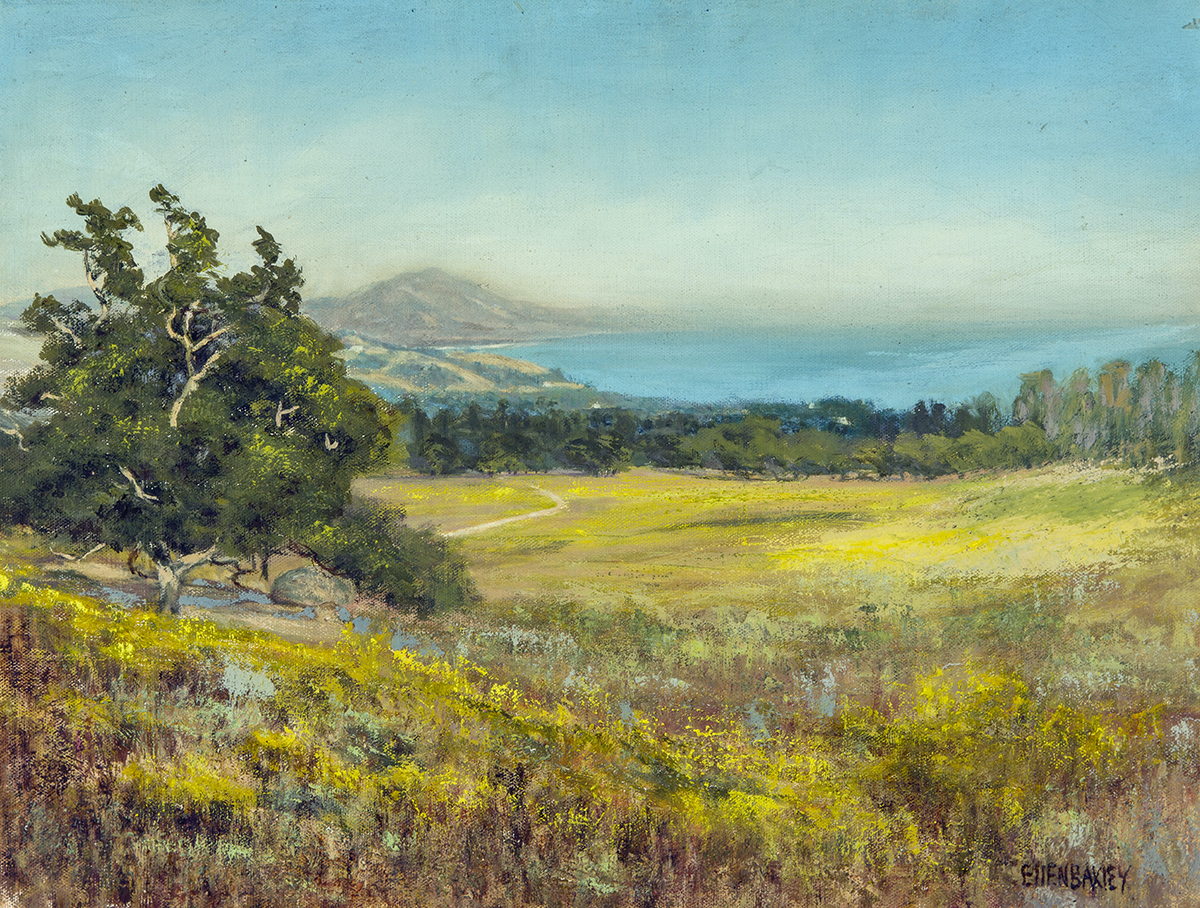
John Muir once wrote, “Climb the mountains and get their good tidings. Nature’s peace will flow into you… and cares will drop away like the leaves of Autumn.” The Santa Barbara Historical Museum’s latest exhibition celebrates the region’s increasingly popular hiking trails and public lands. Isolated by COVID, locked out of their gyms, and finally satiated with the almighty screen, people everywhere have rediscovered the healthful and healing qualities of the great outdoors.
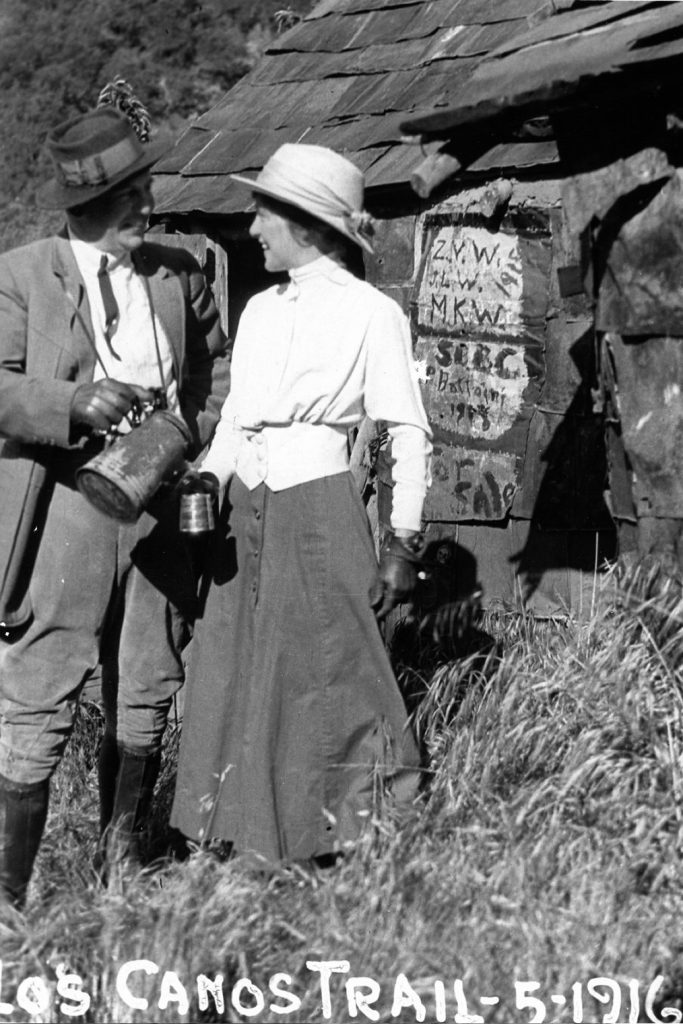
Entitled Take a Hike, Save the World, the exhibit is a visual journey through Santa Barbara’s historic scenic landscapes as seen by artists and photographers beginning in 1875. “Our goal is to inspire our visitors to explore, enjoy, and above all preserve the natural beauty that surrounds us,” says museum director Dacia Harwood. “The exhibition is a reminder of the fragility of these landscapes, which are under threat, not just by development, but from the toll taken by the effects of climate change, wildfires, mudslides, and extreme drought.”
Added to that threat is the overuse and, at times, misuse of the local trail systems by enthusiasts who don’t understand the effects of their actions upon the natural environment. Above Henry Chapman Ford’s evocative rendering of an 1875 Mission Creek (the gateway to several local trails today), is the question, “How can I hike responsibly on our local trails?”
Brian Conant, Los Padres Forest Association Executive Director, answers, “Respect. Practice respect for nature, the wildlife, the land, the land managers, and other trail uses. Simple. That, and try to leave it better than you found it.” Yes, respect and consideration of others. To which I add, stay on the trail, don’t create shortcuts, leave the flowers blooming for the next hiker to enjoy and so they will reseed for next season. Think about consequences and give a ‘hoot.’
Part of a countywide collaboration focusing on raising awareness of the impact of climactic changes, the Museum’s exhibition features late 19th and 20th century paintings whose artists reveled in the beauty of the canyons, mountains, rivers, and fields of the Santa Barbara landscape. An interactive wooden map asks visitors to comment on any of the trails they have trekked by writing on cardboard tags and physically posting on pins.
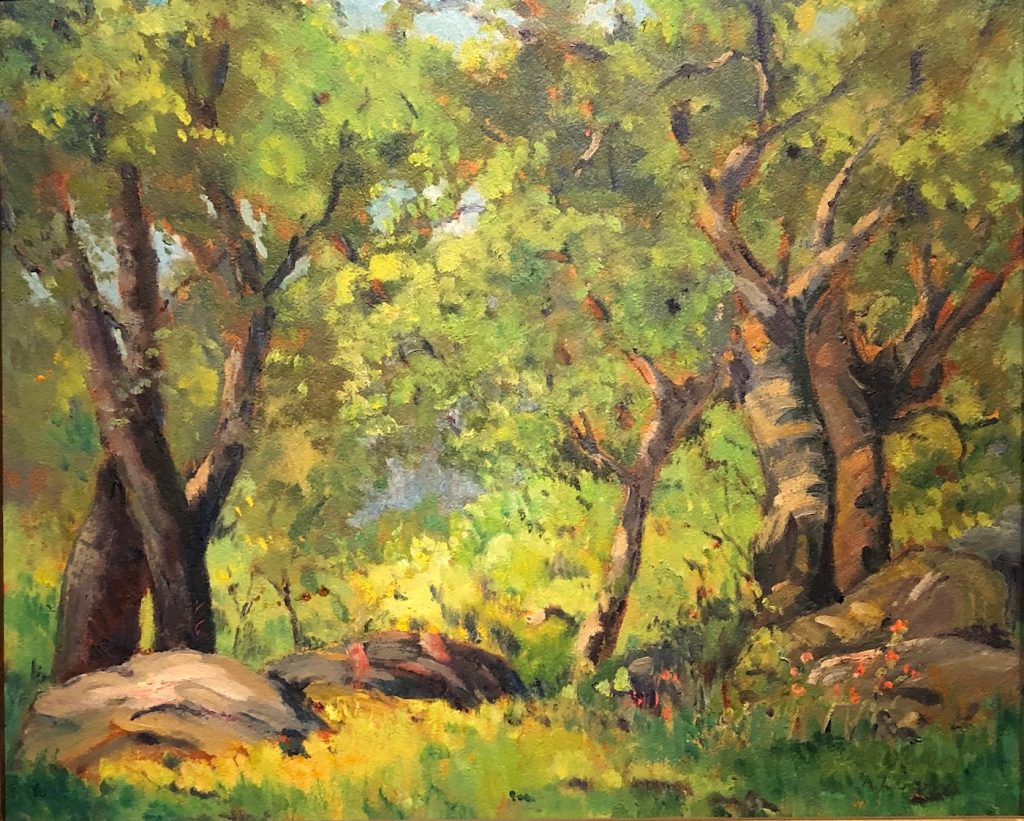
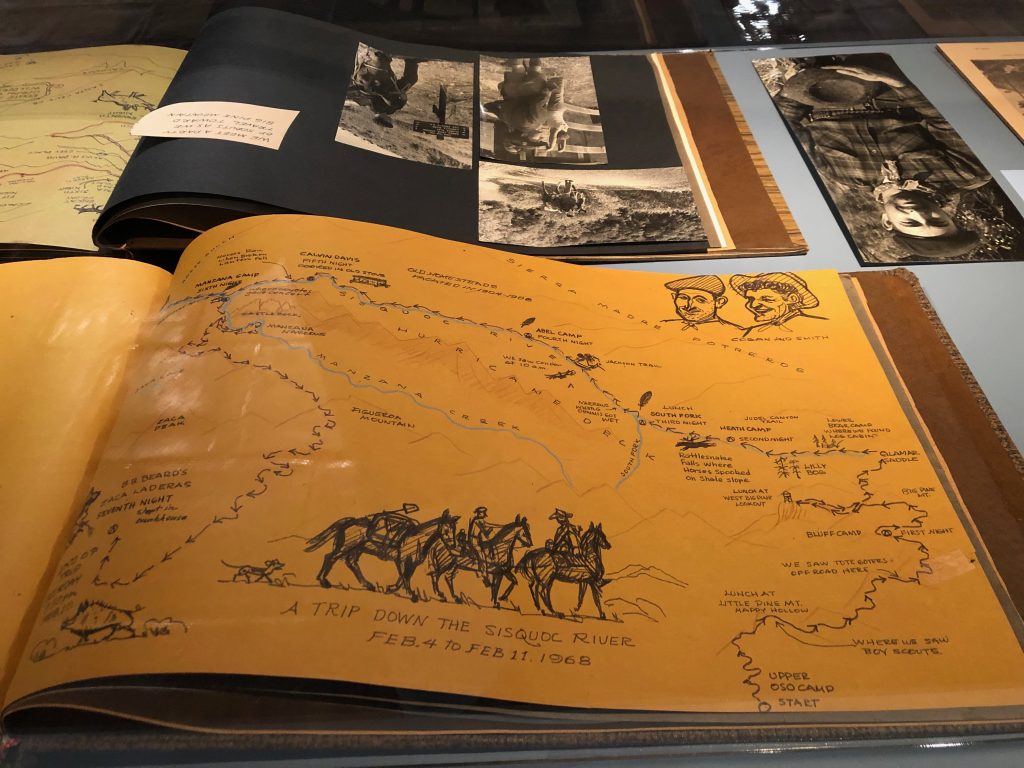
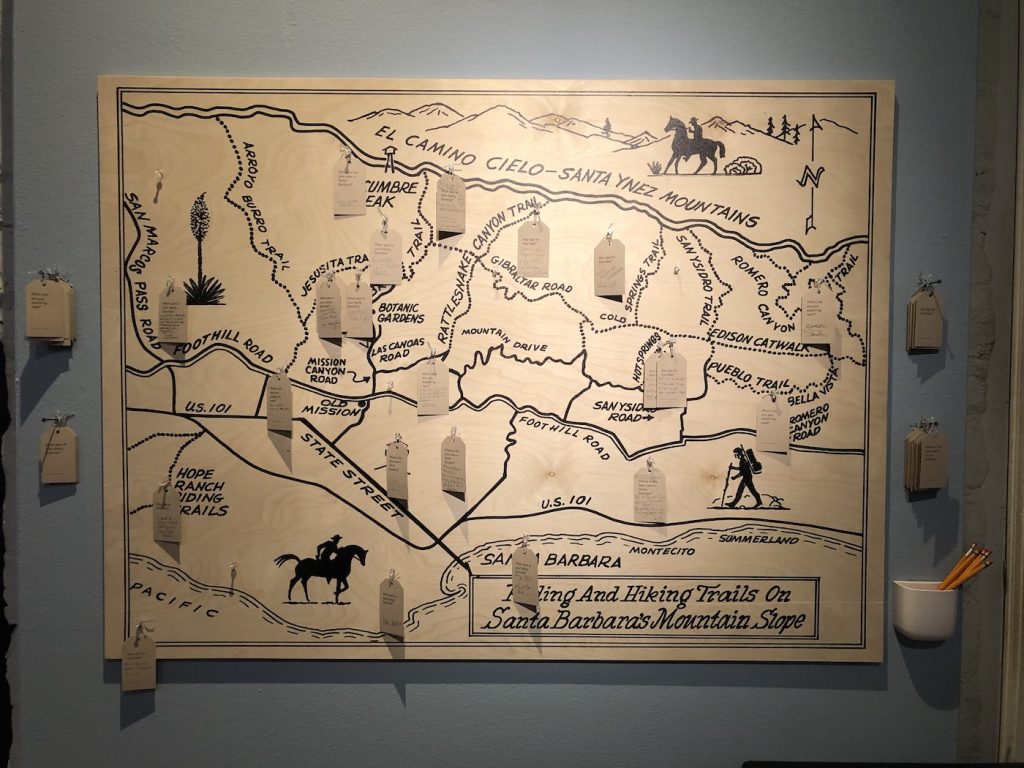
One display case reveals historic boy scout memorabilia and another a scrapbook, created by preeminent mountaineer Dick Smith, of a horseback trip taken with Dennis Cogan to explore the old homestead sites on the Sisquoc and Manzana rivers. Cartooned maps reveal their adventures as do Smith’s signature photographs. (The albums are on loan from the Montecito Association History Committee.) Dick Smith’s passion for the wilderness led to efforts to protect the California Condor from extinction. Today, the Dick Smith Wilderness area is named for him.
Other artists with ties to land preservation include Francis M. Sedgwick, who donated nearly 6,000 acres in Santa Ynez to the University of California, Santa Barbara as a reserve and research center. Ellen Cooper Baxley depicted a scene from her family’s Ellwood Cooper Ranch. Portions of this ranch today are part of the Sperling Preserve, which includes the Coronado Butterfly Grove. One can still see evidence of the olive trees that Ellwood Cooper planted in hope of creating a thriving olive culture in California. A painting by Ray Strong, a founder of the Oak Group of plein air artists who promote conservation and donate funds to preservation causes, depicts the countryside beyond the mountain wall.
Take a Hike, Save the World opened in May and will run through November 13, 2022. Museum hours are currently Wednesday-Sunday, noon to 5 pm, and every Thursday until 7 pm.







